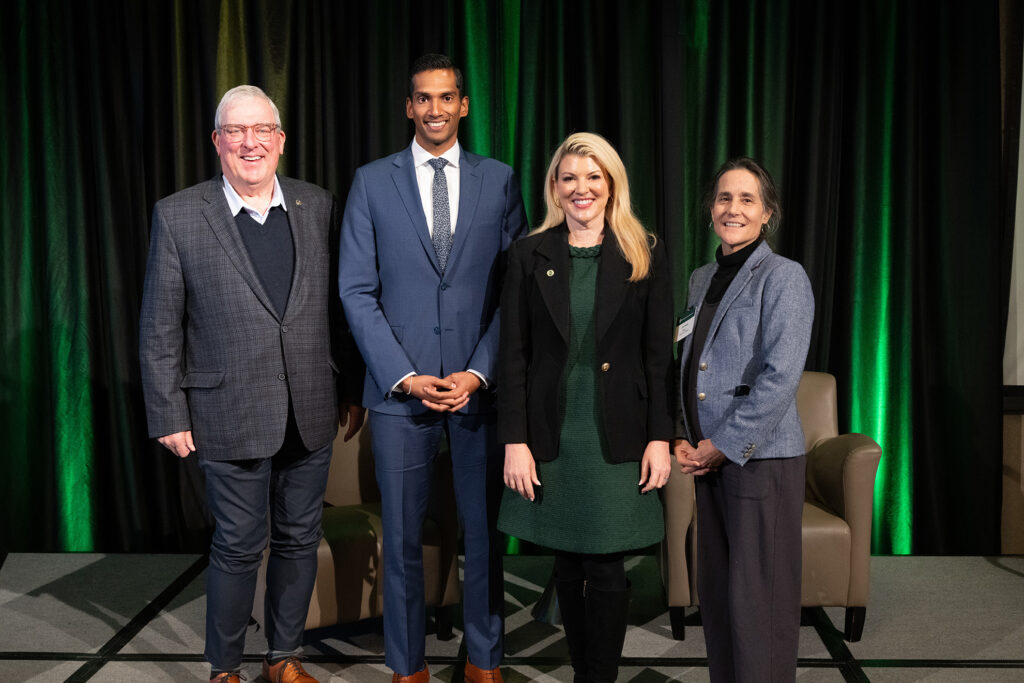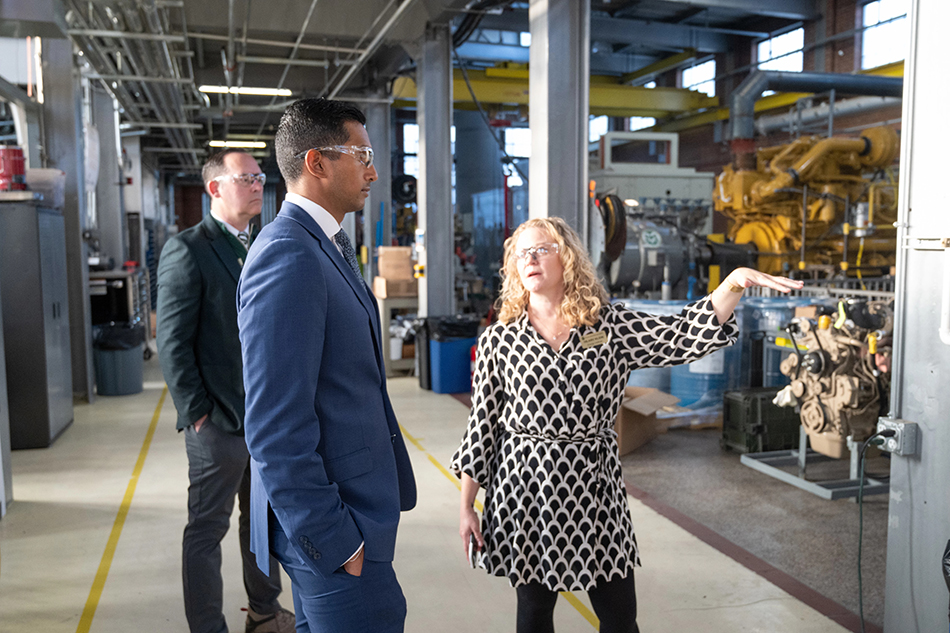Department of Homeland Security leadership visited Colorado State University on Oct. 30 to launch a new toolkit that aims to help municipal leaders from all backgrounds plan for future digital infrastructure needs holistically.
The Connected Communities Toolkit launched online the same day as the visit. It encourages coordinated action and addresses potential policy and technical knowledge gaps across state, local, tribal, and territories around issues like cyber-security, high speed internet access, and disaster preparedness.

It was developed by researchers in the Walter Scott, Jr. College of Engineering and the College of Natural Sciences in collaboration with the DHS and leaders from the cities of New York, San Jose, Memphis and Chattanooga.
To help launch the kit, DHS Assistant Secretary for Cyber, Infrastructure, Risk and Resilience, Iranga Kahangama participated in a public panel discussion aimed at informing local officials about the kit and visited the Powerhouse Energy Institute to hear about related research activity. He also met with CSU President Amy Parsons on ways to continue research partnerships with the agency like this in the future.
Connected Communities broadly refers to efforts by planners, elected officials and municipal leaders to provide digitized community services, or smart services, across a host of areas.
One example of smart services would be digitizing government records to foster broader access by citizens. Another would be installing new technologies that improve 911 emergency services for mobile phone users. Many communities across the country are behind in coordinating on those kinds of activities and may not have designated staff – such as a chief information officer – to help oversee them. In fact, Kahangama said that of the 106 largest U.S. communities, only 26 had published a formal digital transformation strategy as of April 2023.
Wiley Barnes, the executive director of CSU’s Office of Defense Engagement, said the kit provides initial best practices and advice toward creating those positions, engaging stakeholders and developing a shared community vision on these topics. All of that closely echoes the university’s mission to serve communities in Colorado and beyond with needed and actionable information for safety, security, health and economic development.
“This toolkit addresses many of the emerging technology and infrastructure challenges and opportunities that communities of all sizes in our state are facing – giving them a solid framework as a starting point,” he said. “CSU helped lead the work to create this toolkit, and the effort aligns perfectly with our land grant-mission as a university to co-create actionable solutions to the tough problems our communities are facing.”
Creating the Connected Communities Toolkit
Systems Engineering Professor Steve Simske was among the CSU faculty who contributed to the toolkit. He said the document provides high-level principles that can be applied to securing digital technology regardless of their end use.
“There are many examples where developing smart technology may offer benefits to a community but where it should not be developed and implemented in a vacuum,” he said. “Instead, this guide helps officials consider key universal aspects like confidentiality, integrity and availability early on in the process to smooth the integration, to identify risks, and to articulate clearly the plans needed to make those changes a reality.”
During his visit, Kahangama met with faculty to hear about research at the university into key areas related to connected community planning like wildfire response, water infrastructure and cyber-physical systems. In his address before the panel, he said the kit was a great example of partnership around a vital document.
“Between the university experience here at CSU and our partners at state and local governments, we have created a model for an integrative process that takes lessons learned on the ground and applies them in a way that helps other communities achieve excellence in this space,” he said. “This is the start of what I think will be an enduring partnership that will continue to evolve over time.”
